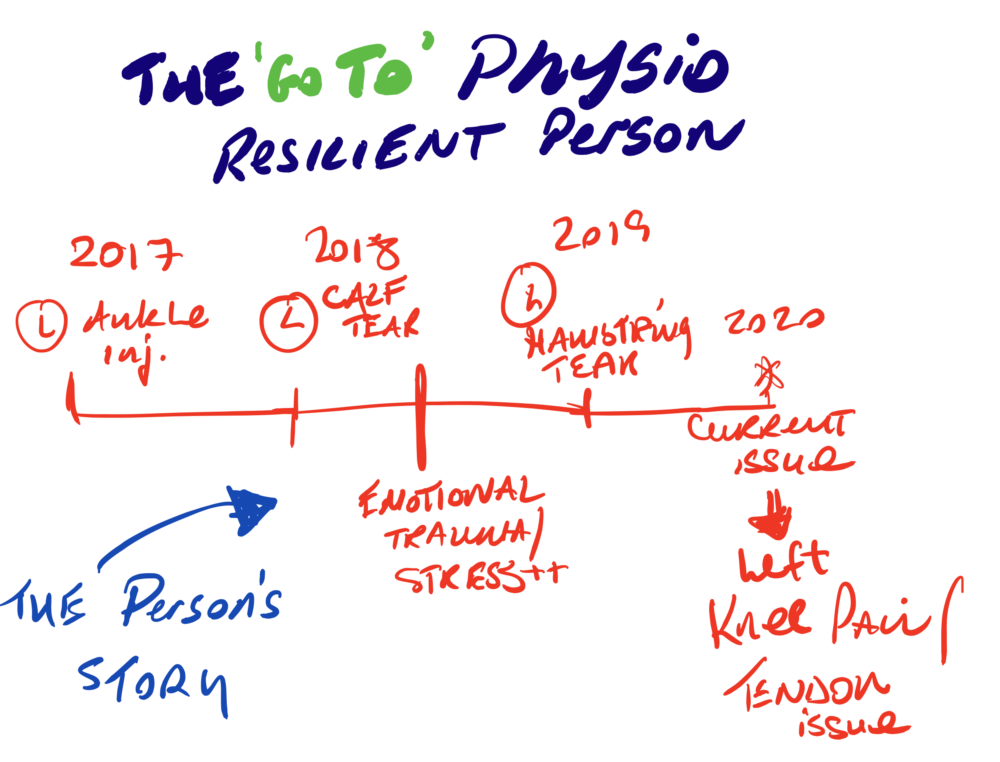How To Make Sense Of Your Patients Symptoms With A Subjective Assessment Timeline
Today I’ll share with you a simple and powerful tool what will not only help you understand the problem and solution but will also help you explain this to your patient so they can fully understand the problem and the work that needs to be done to fix the problem.
Only once your patient fully understands what is going on will you get complete ‘buy in’ for your treatment plan…
A Visual Representation

The real power with this method is giving a visual representation of all of the stressors our patient has been through in the past. So begin by drawing a timeline.
Patient History
For example, say I have a patient come in with left Achillies pain when running. This is their current problem, but if you delve into their history you can see that it all started two years ago with a right ankle sprain. Then 18 months ago they had right knee pain, then perhaps 12 months ago they had lower back pain.
Before drawing this timeline out you would have focused almost solely on the left leg and the Achillies but when you look at the history you realise there is far more to it and far more going on on the right side.
Yes, you could just treat that left achilles but when they go back to running, if it is a problem with the right side then the issue will come back or appear somewhere else.
More likely, based on their previous history we can see that our patient may have had some motor adaptations in response to previous stresses in the right leg. Maybe the brain is subconsciously offloading the right leg and sending more to the left leg and this could be why the achilles is the issue. You will still be treating the achilles but you can put more of the focus on the right side making sure the problem is solved for good.
Your Explanation Is Key
If you just explain their history, the problem and the solution to the patient then they aren’t likely to follow. Drawing it out in front of them allows them to learn visually just what is going on with their body.
Now Implement
Start with this straight away. Implement it in your next initial assessment and help explain to your patient. Watch as confidence in you rises and patient ‘buy in’ increases.
For more tips you can implement straight away and information on the Go-To Physio method click here.

